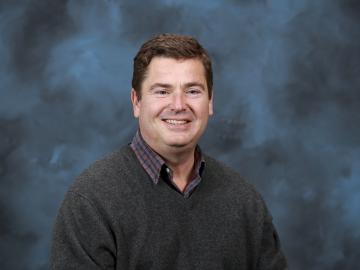Filter News
Area of Research
- (-) Computer Science (8)
- (-) Energy Frontier Research Centers (14)
- (-) Nuclear Systems Modeling, Simulation and Validation (1)
- Advanced Manufacturing (18)
- Biological Systems (15)
- Biology and Environment (142)
- Biology and Soft Matter (5)
- Building Technologies (5)
- Chemical and Engineering Materials (3)
- Chemistry and Physics at Interfaces (11)
- Clean Energy (337)
- Climate and Environmental Systems (10)
- Computational Biology (5)
- Computational Chemistry (5)
- Computational Engineering (3)
- Data (1)
- Earth Sciences (1)
- Electricity and Smart Grid (1)
- Energy Sciences (2)
- Fossil Energy (2)
- Fuel Cycle Science and Technology (3)
- Functional Materials for Energy (14)
- Fusion and Fission (49)
- Fusion Energy (9)
- Geographic Information Science and Technology (3)
- Isotope Development and Production (1)
- Isotopes (29)
- Materials (327)
- Materials Characterization (2)
- Materials for Computing (26)
- Materials Synthesis from Atoms to Systems (13)
- Materials Under Extremes (12)
- National Security (69)
- Neutron Data Analysis and Visualization (2)
- Neutron Science (151)
- Nuclear Science and Technology (51)
- Nuclear Systems Technology (1)
- Quantum Condensed Matter (4)
- Quantum information Science (5)
- Reactor Technology (1)
- Renewable Energy (2)
- Sensors and Controls (3)
- Supercomputing (261)
- Transportation Systems (9)
News Type
Media Contacts

ORNL is home to the world's fastest exascale supercomputer, Frontier, which was built in part to facilitate energy-efficient and scalable AI-based algorithms and simulations.

A research team from the Department of Energy’s Oak Ridge and Lawrence Livermore national laboratories won the first Best Open-Source Contribution Award for its paper at the 37th IEEE International Parallel and Distributed Processing Symposium.

Using complementary computing calculations and neutron scattering techniques, researchers from the Department of Energy’s Oak Ridge and Lawrence Berkeley national laboratories and the University of California, Berkeley, discovered the existence of an elusive type of spin dynamics in a quantum mechanical system.

A team led by Oak Ridge National Laboratory developed a novel, integrated approach to track energy-transporting ions within an ultra-thin material, which could unlock its energy storage potential leading toward faster charging, longer-lasting devices.

ORNL computer scientist Catherine Schuman returned to her alma mater, Harriman High School, to lead Hour of Code activities and talk to students about her job as a researcher.

Three researchers at Oak Ridge National Laboratory will lead or participate in collaborative research projects aimed at harnessing the power of quantum mechanics to advance a range of technologies including computing, fiber optics and network

Scientists at the Department of Energy’s Oak Ridge National Laboratory induced a two-dimensional material to cannibalize itself for atomic “building blocks” from which stable structures formed. The findings, reported in Nature Communications, provide insights that ...



From the bluebird painting propped against her office wall and the deer she mentions seeing outside her office window, Linda Lewis might be mistaken for a wildlife biologist at first glance. But rather than trailing animal tracks, Lewis, a researcher at the Department of Energy’s Oak Ridge National Laboratory, is more interested in marks left behind by humans.




